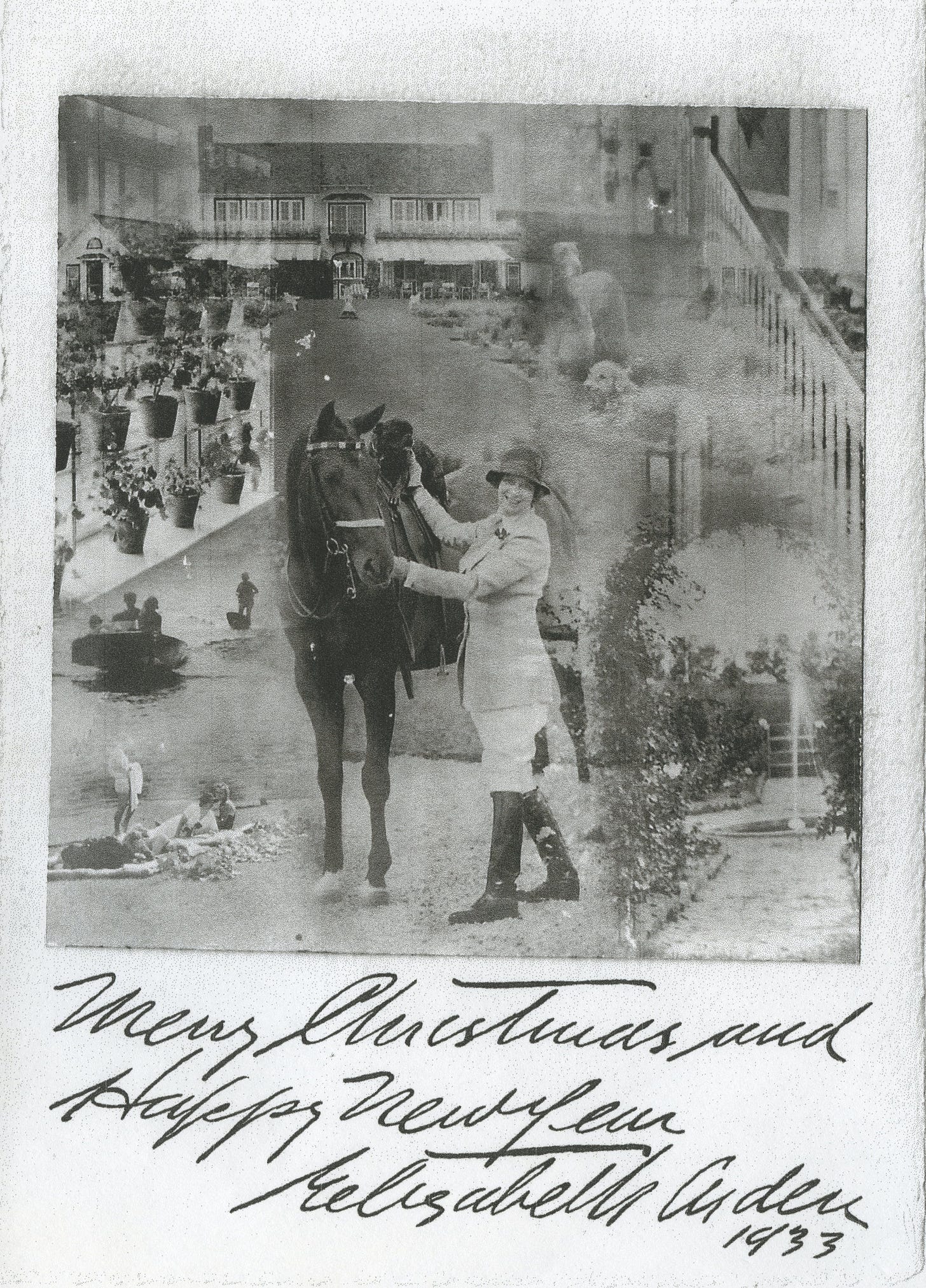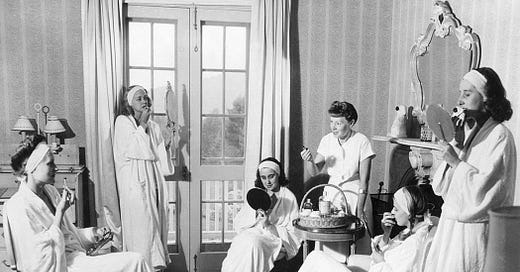Maine Chance: Elizabeth Arden's Spa-Resort
“For Maine Chance Farm is a gold-plated rest cure and reducing ranch for the pampered daughters of the idle rich, conducted with all the discipline and smooth efficiency of the ordinary army post.” – Boston Globe, July 31, 1938
By the time Elizabeth Arden opened her Maine Chance to the public in 1934, she was already renowned worldwide. Florence Nightingale Graham, an Ontario farm girl, landed in New York around 1907. Finding work first as a bookkeeper for a pharmaceutical company, Florence began to learn her way around the lab, learning about skincare. Quickly she moved on, becoming a treatment girl for the early beauty culturist Eleanor Adair, where she learned massage and facial treatments; “She found she had the hands for the work, picked up the elementary formulas for manufacturing cosmetics, and began to perceive the golden future in the beauty business.” A brief partnership with fellow culturist Elizabeth Hubbard supposedly blew up in “an emotional storm,” but left Graham with a salon on Fifth Avenue still emblazoned with the name “Elizabeth.” Inspired by Tennyson’s Enoch Arden, “Elizabeth Arden” was born in 1910.

As a businesswoman, she was exacting and innovative—pushing chemists to create ever more novel, never-seen-before face, body, and makeup products that worked. Targeting middle-aged women, Arden marketed the idea that cosmetics and beauty products could create a more youthful, beautiful visage. She is largely credited with establishing makeup as “proper and appropriate, even necessary, for a ladylike image.” Her salons in New York and cities around the world promised to help women “rediscover” their beauty through facials, body treatments, exercise classes, and beauty makeovers.


It’s perhaps no surprise that Arden would want to extend her services from a few hours or a day to several weeks, from a salon to a full beautifying resort, though her Maine estate was not purchased with the idea of becoming a spa in mind. As she was climbing New York’s social ladder in the early 1920s, Arden became friends with the literary and theatrical agent Elisabeth “Bessie” Marbury, a progressive lesbian some twenty years Arden’s senior. Though Arden was a conservative, Marbury became her business mentor and dear friend. As a summer retreat, Marbury had purchased a farm on Long Pond, in Maine’s Belgrade Lakes; when Arden visited Lakeside Farm, she instantly fell in love and in 1929 bought the adjoining 750 acres, which she named Maine Chance. There she constructed a grand new house where she would bring society friends and staff from New York. Marbury passed away in 1933, at age 76, stipulating that her Maine property become “a home for working women.” Arden attempted to raise money to fulfill Marbury’s wish but was unsuccessful; she purchased the property, combining it with hers, and developed the 1,500 acres into a health spa. Within the year, Maine Chance was open for business.
Keep reading with a 7-day free trial
Subscribe to Sighs & Whispers to keep reading this post and get 7 days of free access to the full post archives.




